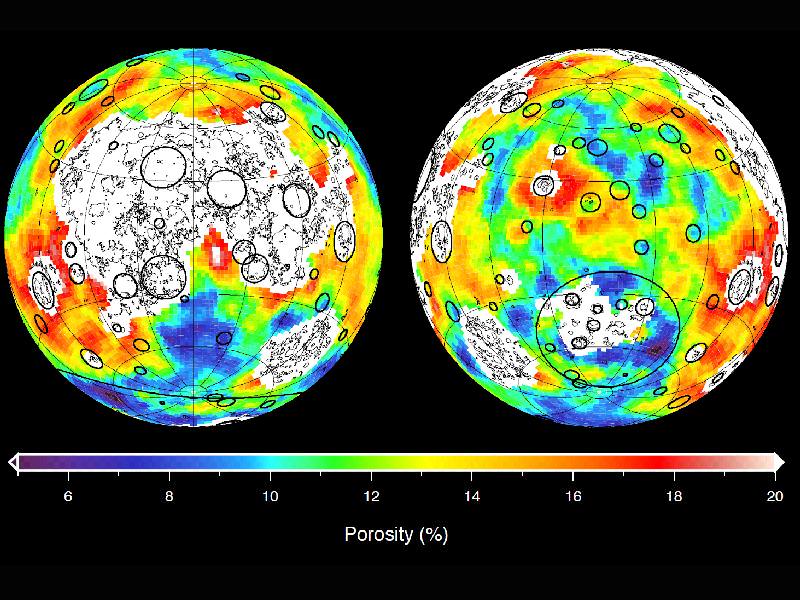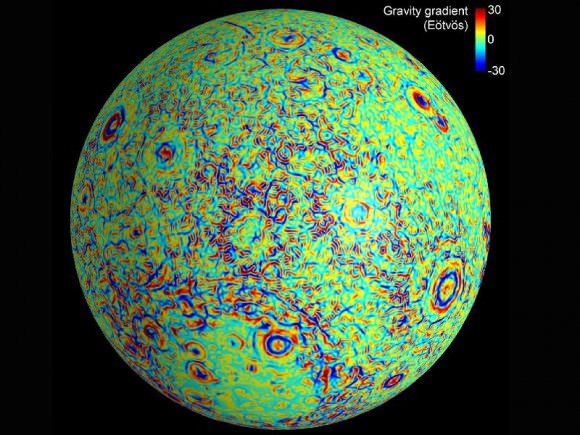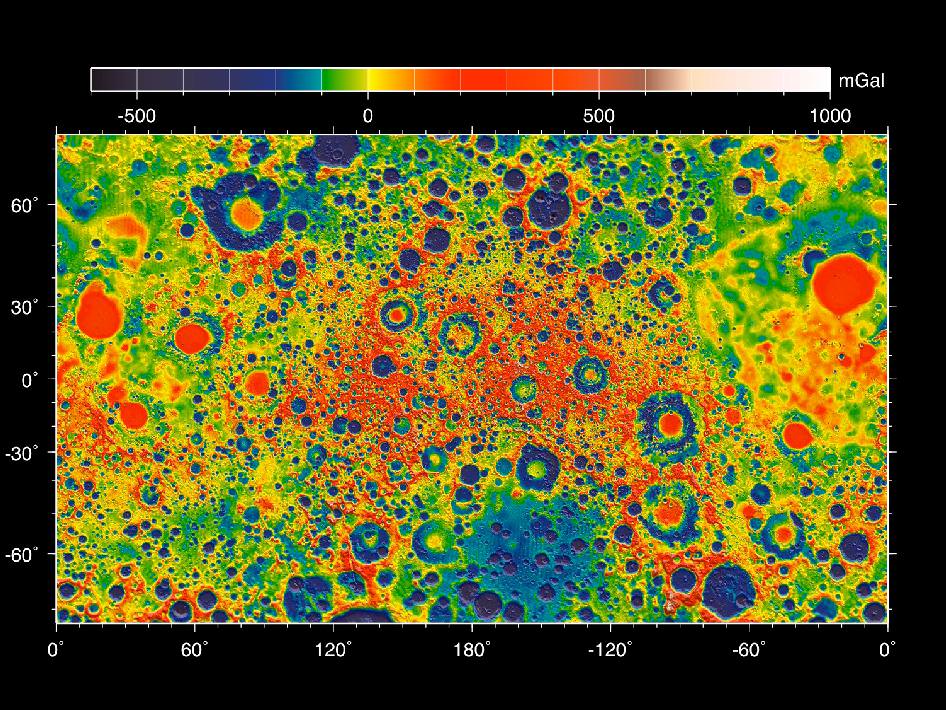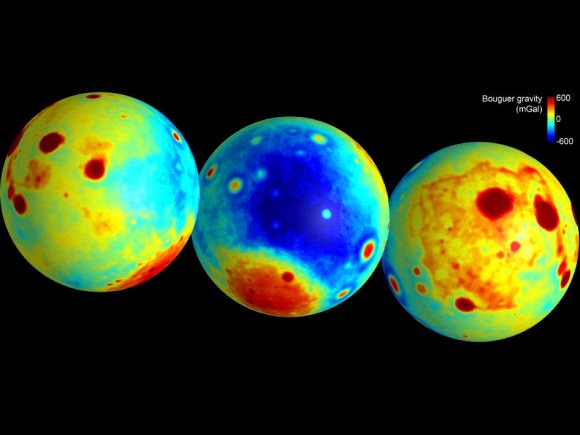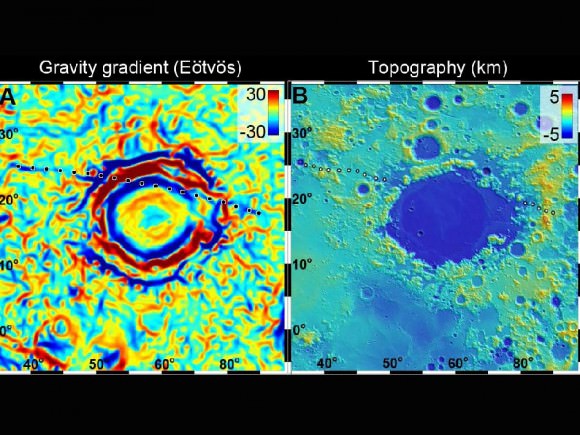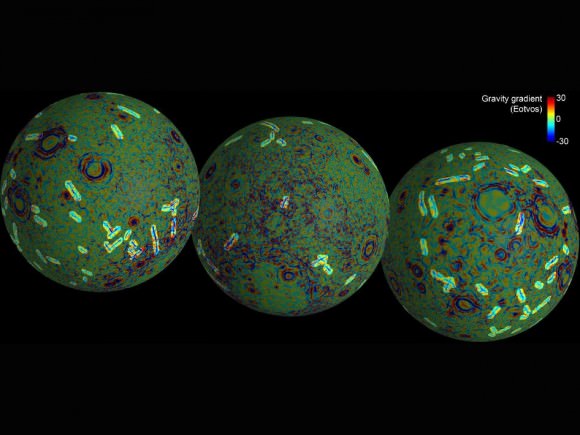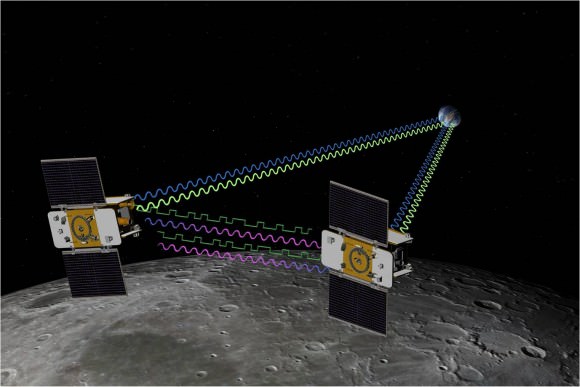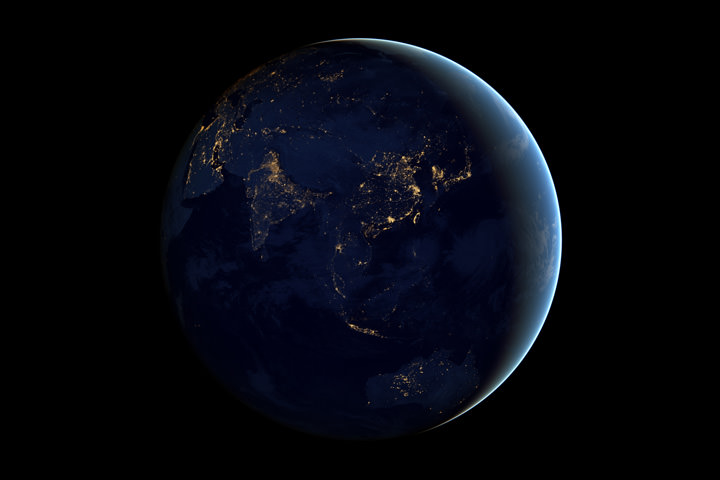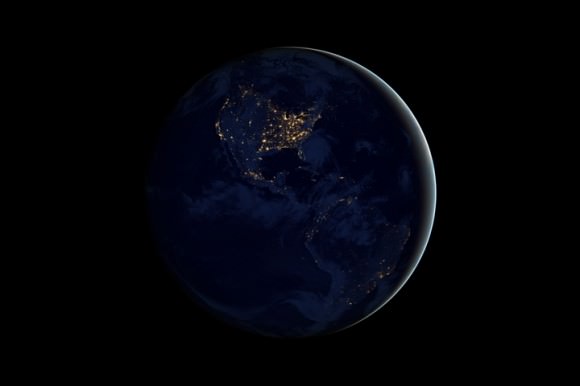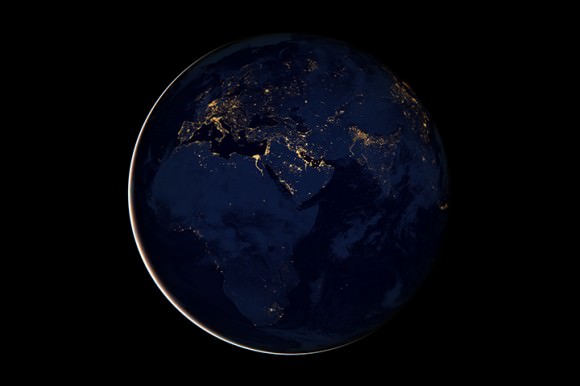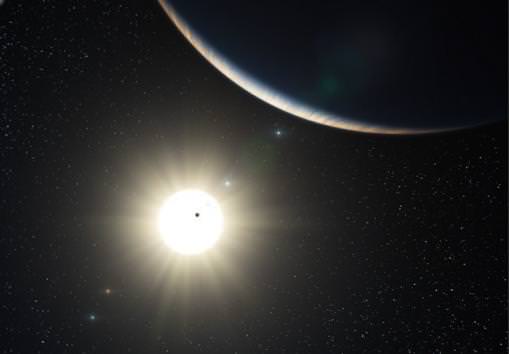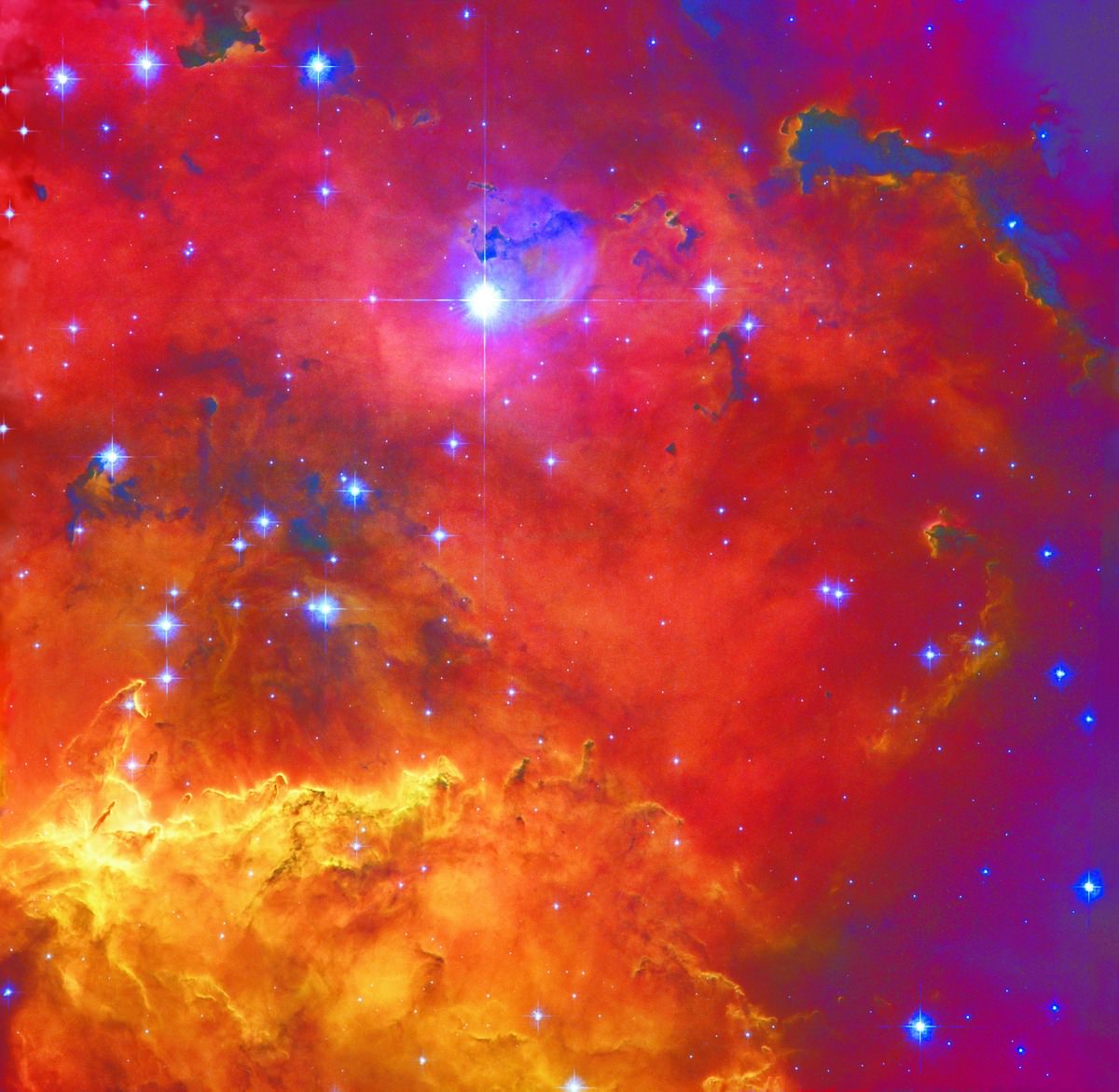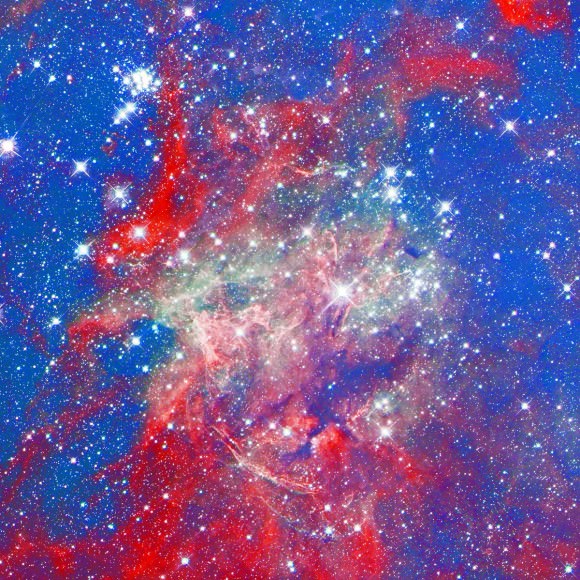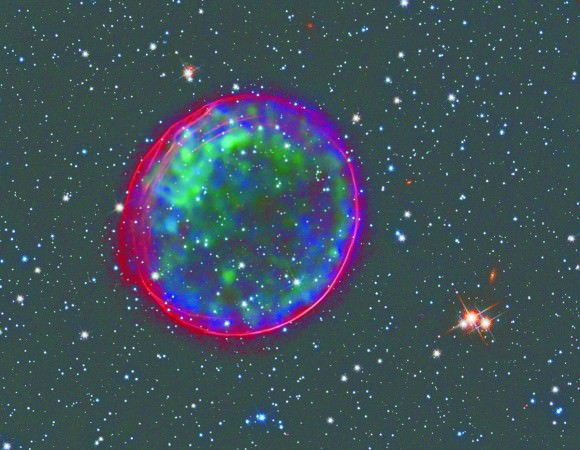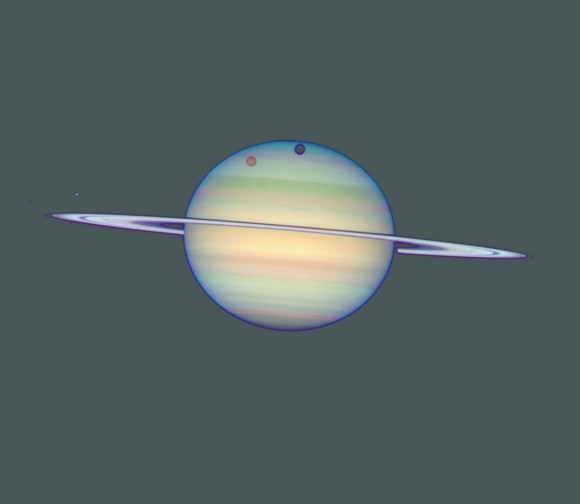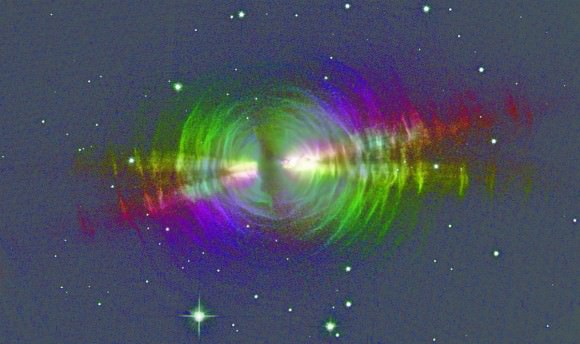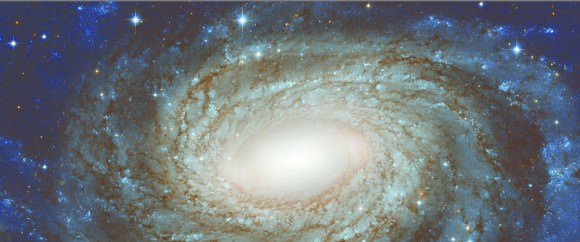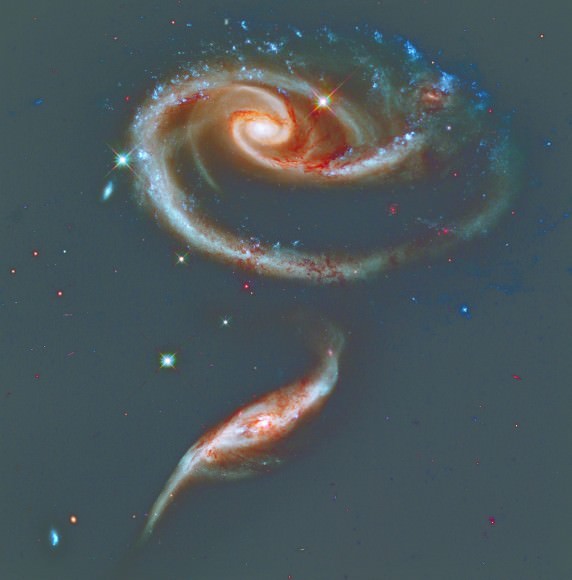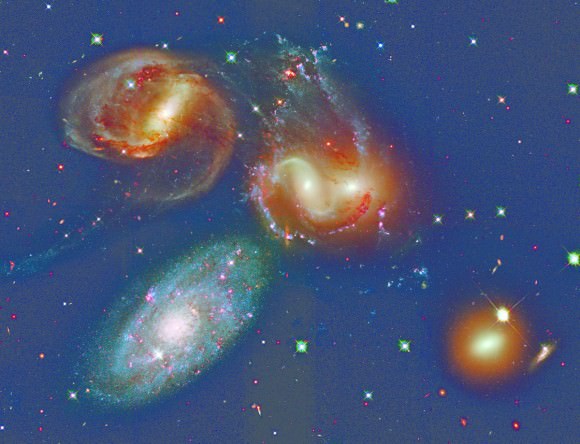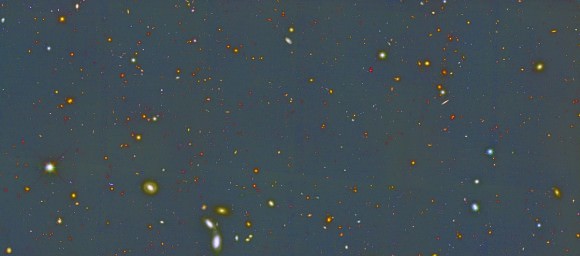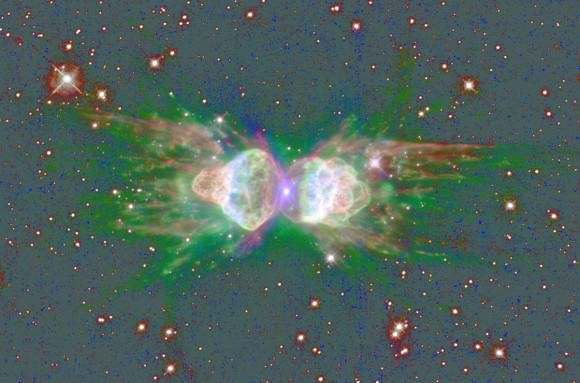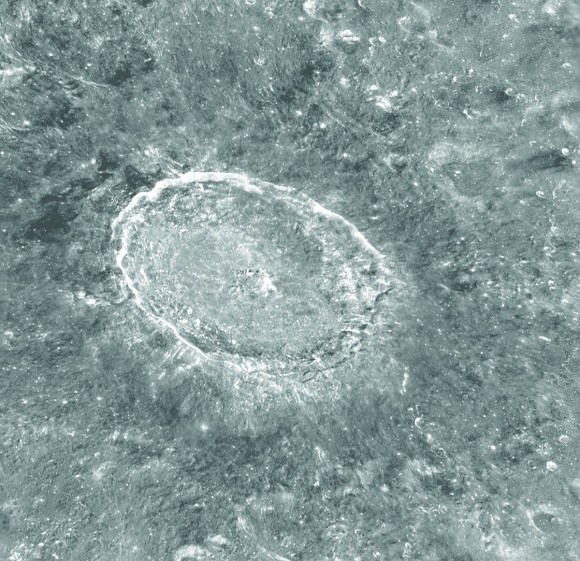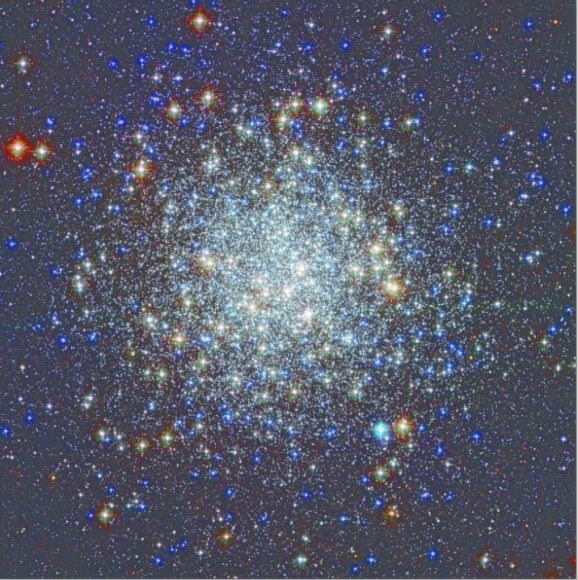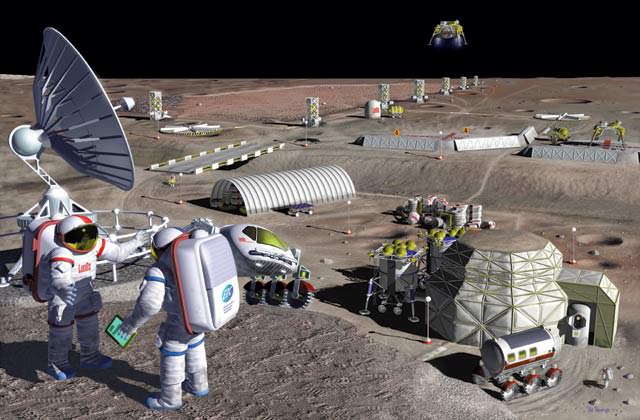This image shows a highly porous crust on the lunar surface, a consequence of fractures generated by billions of years of impact cratering. Credit: NASA/JPL-Caltech/ IPGP
From looking at the Moon’s surface, we know it has taken a beating from asteroids and comets pummeling its surface. But new details from the GRAIL mission reveal the lunar interior just below the surface has been walloped as well, and is almost completely pulverized. This surprising finding, along with the discovery of deep fractures, suggests that in its first billion years, the Moon may have endured a history of massive impacts, more than previously thought. By inference, this means Earth and other terrestrial planets in the Solar System endured huge early impacts, too.
“It was known that planets were battered by impacts, but nobody had envisioned that the [Moon’s] crust was so beaten up,” said Maria Zuber, Principal Investigator for the GRAIL mission. “This is a really big surprise, and is going to cause a lot of people to think about what this means for planetary evolution.”
The new GRAIL data agrees with recent studies that suggest that the Late Heavy Bombardment may have lasted much longer than originally estimated and well into the time when early life was forming on Earth. Additionally, this “late-late” period of impacts — 3.8 billion to 2.5 billion years ago — was not for the faint of heart. Various blasts may have rivaled those that produced some of the largest craters on the Moon, and could have been larger than the dinosaur-killing impact that created the Chicxulub crater 65 million years ago.
From GRAIL’s measurements, Zuber and her team have now stitched together a high-resolution map of the Moon’s gravity (read more about it in our previous article.)
But the resulting map also reveals an interior gravitational field consistent with an incredibly fractured lunar crust. Compared to the surface, the map of the interior looks extraordinarily smooth. Except for the large impact basins, the Moon’s upper crust largely lacks dense rock structures and is instead likely made of porous, pulverized material.
This moon map shows the gravity gradients calculated by NASA’s GRAIL mission. Red and blue correspond to stronger gravity gradients. Image credit: NASA/JPL-Caltech/CSM
GRAIL’s lunar gravity map has also revealed numerous structures on the Moon’s surface that were unresolved by previous gravity maps of any planet, including volcanic landforms, impact basin rings, and many simple, bowl-shaped craters. From GRAIL’s measurements, scientists have determined that the Moon’s crust, ranging in thickness from 34 to 43 kilometers, is much thinner than planetary geologists had previously suspected. The crust beneath some major basins is nearly nonexistent, indicating that early impacts may have excavated the lunar mantle, providing a window into the interior.
“If you look at surface of the Moon and how heavily cratered it is,” said Zuber during a press briefing on Wednesday from the American Geophysical Union conference, “that tells us that all terrestrial planets looked that way, but Earth’s history is not preserved because of atmospheric and erosional processes on our planet. So, if we want to study those early periods, we need to go somewhere else, and the Moon is the perfect place for that.”
Zuber said that from finding an incredible fracturing of the Moon’s upper crust, we now know the crust of other planets likely have these same fractures as well. “We have reason to believe that the fractures on the terrestrial planets are deeper, and perhaps as in case of the Moon, even into the mantle. This effects planetary evolution, such as how planets lose heat,” she said.
Fractures also provide a pathway for fluids.
“Mars has been theorized to have an ancient ocean, and we wonder where it went,” said Zuber. “The ocean could well be underground, and we’ve seen evidence of water underground on Mars. If there were ever microbes on the surface of Mars, they could have gone very deep, so this finding opens up possibilities like that, and really opens a window to the early stages of our Solar System and just how violent a place it was.”
In addition to GRAIL’s discoveries, Zuber said another major accomplishment has been the performance of the spacecraft themselves. To achieve the mission’s science goals, the two probes, which can travel more than 200 kilometers apart, needed to be able to measure changes in the distance between them to within a few tenths of a micron per second. But GRAIL actually outperformed its measurement requirements by about a factor of five, resolving changes in spacecraft distance to several hundredths of a micron per second.
“On this mission, with two spacecraft, everything had to go perfectly twice,” Zuber says, adding proudly, “Imagine you’re a parent raising a twins, and your children sit down at the piano and play a duet perfectly. That’s how it feels.”

